Clad in mountains and lush forest, the kandy district spans across an area of 1940 square kilometers in the central hills. Kandy is considered the most sacred city in the island, as it is the home to the Temple of the Sacred Relic. The district was the capital of the ancient Kandyan Kingdom, and prides itself in rich traditions and religious heritage.
Kandy is located in the mountainous and thickly forested interior of the island nestled between multiple mountain ranges including Knuckles, Hantana, Ambuluwawe, Balana and Alagalla. This provides the region with an elevation of 100m-1600m above the sea level. Due its geographical unique characteristics, the district harbors several waterfall soften unknown to the public. It is estimated that more than 21 per cent of the total land mass of the district is under a forest cover. Many species of flora and fauna can be observed in these forests, making them rich in biodiversity. The nation’s longest river, the Mahaweli river flows across the Kandy district, nourishing numerous reservoirs and farmlands.
The city of Kandy has been erected centering the iconic Bogambara lake. On the north shore of the lakelies the city’s official religious monuments,including the Temple of the Tooth Relic and the Royal Place. The city of Kandy was named a UNESCO World Heritage Site considering itshistorical significance and cultural heritage. Many Buddhist monasteries of historical prominence such as the gadaladeniya Temple, Ambakke Devalaya, Degaldoruwa Raja Maha Viharaya, Galmaduwa Raja Maha Viharaya etc. are scattered across the district, reminiscing the religious tradition that transcend generations. The district of Kandy had remained a crown jewel of the island from the ancient times to the present, and offers its visitors of flavours of natural spendour and cultural grandeur.
The district of Kandy had remained a crown jewel of the island from the ancient times to the present and offers its visitors flavors of natural splendor and cultural grandeur.
Kandy
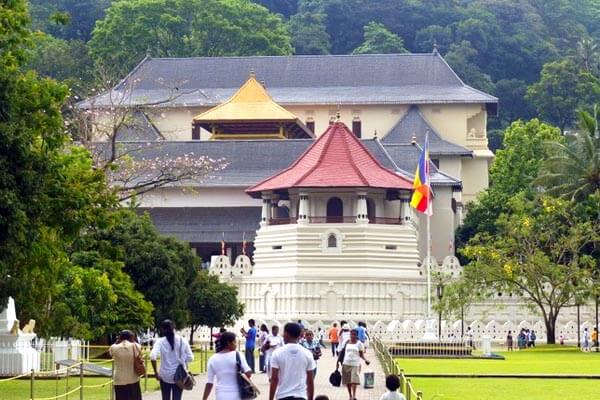
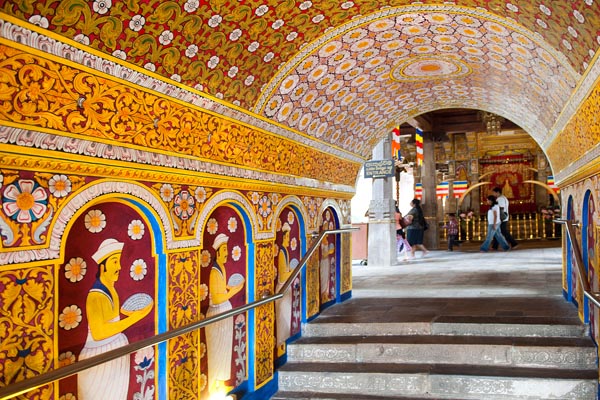
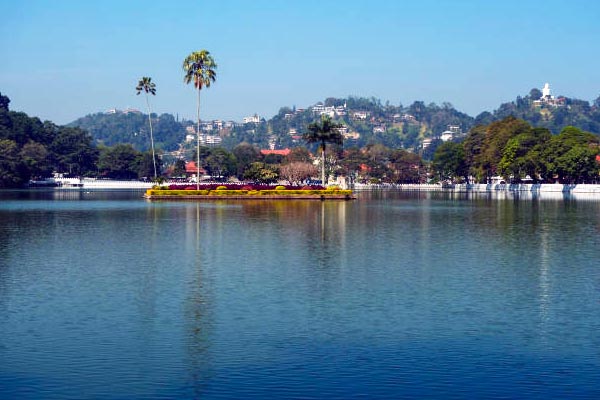
Kandy is the last capital of Sri Lanka; its history brings to mind images of riches, marching elephants and much pomp and pageantry. It was the seat of government of the last Sinhalese kingdom, until it was taken over by the British in 1815. Today, it attracts tourists and pilgrims alike who come here to visit the Temple of the Tooth, the most sacred Buddhist shrine in Sri Lanka, and to experience the famous Esala Perahera. Easy to wander around, Kandy also has some interesting museums and markets to explore. There is a range of accommodation to choose from, with many of the town’s hotels set in the surrounding hills. Kandy also makes a great base for exploring the Knuckles Range and the outlying temples.
The Temple of the Tooth
The Temple of the Tooth, or Sri Dalada Maligawa, houses Sri Lanka’s most important Buddhist relic, the Buddha’s tooth. Built in the 16th century, the original temple stood at the heart of the Royal Palace complex. The temple was plundered along with the palace when the Dutch attacked the city in 1765. The main shrine was originally constructed during the reign of Vimala Dahrma Suriya I (1590-1604); it was rebuilt by King Rajasinghe II (1634-1686) following the Dutch incursion. The palace was renovated in the 19th century by Sri WickramaRajasinghe, the last king of Kandy, who built the most and replaced the earlier entrances with a massive stone gateway. An LTTE bombing badly damaged the temple in 1998, but it has since been restored.Kandy Lake
Located in the heart of the city, this lake was created by the last king of the Kandyan kingdom, Sri WickramaRajasinghe, in the 19th century. The island in the center was used as the king’s pleasure house before the British converted it into an ammunition store after they conquered Kandy in 1815. The building on the south shore, opposite the Temple of the Tooth complex, was formerly a monk’s bath house; it is now a police station. Visitors can hire a boat for a tour across the water. Lone travellers are advised to avoid the eastern and after dark.Kandy National Museum
On a small hill east of the Temple of the Tooth stands the Kandy National Museum, housed in a white building used to function as the Queen’s Palace. The exhibits in this museum depict life in Kandy before the arrival of the Europeans. Among the displays are weapons such as bows and arrows, knives and daggers as well as jewellery and traditional costumes. In addition, items of the day-to-day use such as jiggery moulds with elephant designs, and areca nut cutters shaped like can be seen near a display of devil dance masks and wooden carvings. The museum is good place to take a closer look at ola-leaf manuscripts and to appreciate the skills of the crafts-man of the Kandyan kingdom.Museum of world Buddhism
Those interested in Buddhism will find a visit to this museum rewarding. House in a Neo-Classical building from the British era, the museum explores the history of Buddhism in Sri Lanka, and also has exhibits on Buddhism in other Asian countries. A large number of the sculptures on display here are replicas, while some of other objects have been donated by the relevant countries. Tourists who have visited Aukana and Sasseruwa will find the photographs of the colossal Bamiyan Buddha statue in Afghanistan especially interesting. The replica of the fasting Buddha statue in the Pakistan pavilion is also striking. Rooms upstairs filled with exhibits focusing on Buddhist beliefs in countries such as India, China, Korea, Vietnam and Japan.Udawatta Kele
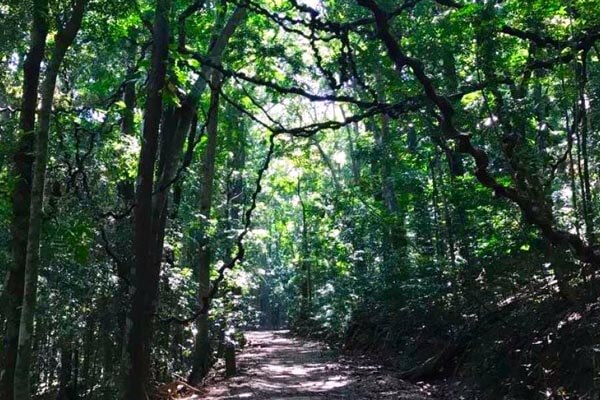
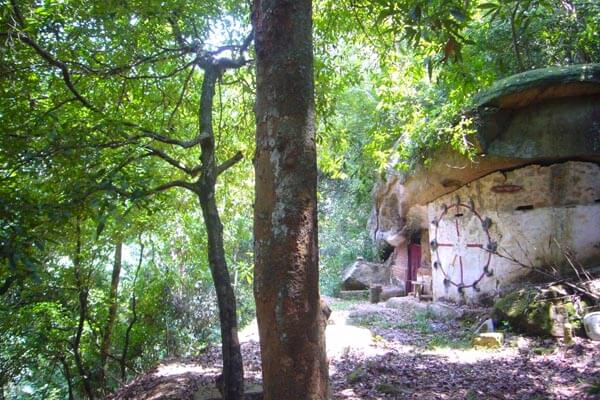
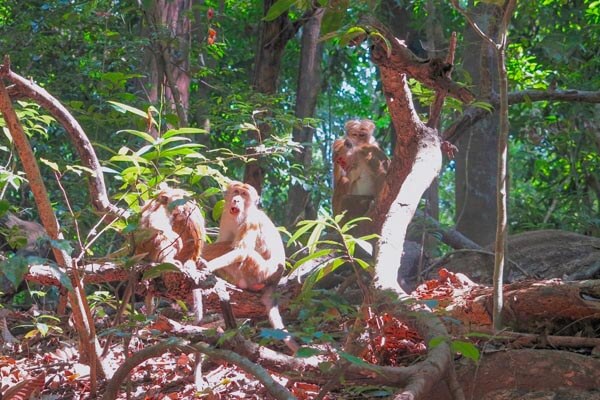
Located close to the Sri Dalada Maligawa, the lush forest cover of Udawatte kele is connected with an extensive yet interesting ancient history. King Wickramabahu, the first Kandyan King to ascend the throne, declared Udawatta Kele royal forest reserve. Successive Kings and queens who ascended the Kandyan throne, vowed to protect the forest and impose heavy penalties on those who defied their laws. As a result, the forest was denounced forbidden to the public and remained impenetrable for over many centuries. Wild boar, monkeys here, squirrel, anteaters, porcupine, monitor lizard, tortoise and a veriety of birds, worms and insects are said to have lived in perfect harmony with nature. It is also recorded that elephants, elk and leopards roamed freely amidst giant tree and hanging creepers. During times of war, the Kandyan monarchs used the forest for their defence against attacks and very often escaped through the thick forest foliage to find safe ground.
Records from contemporary history state that in 1856, the forest was denounced a protected sanctuary, and in 1938 named as a wildlife reserve. Sprawling across 257 across of land, the forest provides a protective cover to the nearby Dalanda Maaligawa and the Bogambara Lake. It also acts as the watershed for all streams and waterways that feed into the Bogambara Lake. Udawatte Kele contains a variety of indigenous trees, creepers, ferns and grasses that are adoptive to shifting climatic conditions. The forest’s foliage is formed in two tiers of canopy, with the top tier’s branches heavily intertwined. This has limited the penetration o sunlight towards the forest floor, thus allowing a thick layer of moss and fungi to form in abundance. Udawatta Kele was an irreplaceable resource for the ancient kandyan kingdom. Today, as the city of Kandyan continues to evolve in the wake of modernization, it is the sole responsibility of all travelers, to protect and preserve the forest’s natural environment.
Peradeniya Botanical Gardens
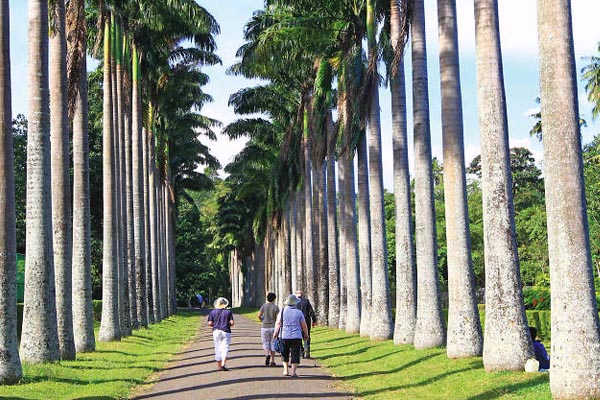
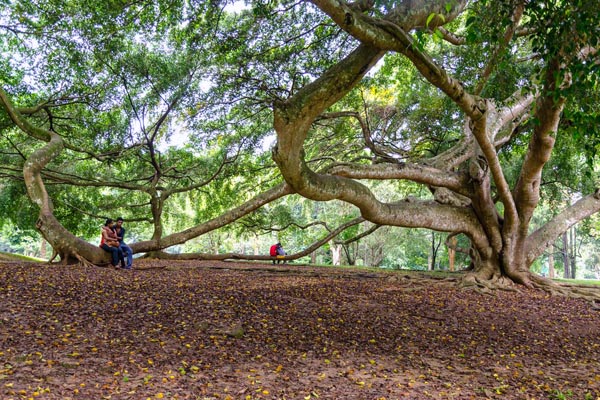
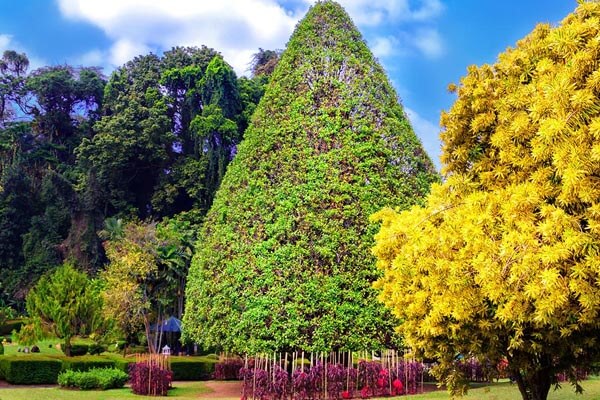
These grounds were originally laid out as pleasure gardens for the Kandyan royalty in 1371. But after the British dethroned the last Kandyan king Sri WickramaRajasinghe in 1815, the royal park was turned into botanical gardens in 1821.
A useful map at the entrance helps visitors explore some of the 60 ha of foreign and endemic plants and trees. The most notable among these are the giant bamboo, palmyra palms and tailpot palms. Near the entrance is the Orchid House, which displays over 300 varieties. Close by, the spice garden teems with a wealth of plants such as cloves, cinnamon vanilla and nutmeg. A short walk to the north lies the fernery.
Lined with exotic varieties of trees, the attractive avenues make for a pleasant stroll. West of the entrance is Cook’s Pine Avenue, which is bordered by twisted Cook’s pines. Running town the center, Royal Palms Avenue is one of the most impressive. Another road of note is the double Coconut Avenue near the entrance, which is fringed by stumpy coco de mer trees. West of the royal Palms Avenue lies the great Lawn, with a gargantuan Javan fig tree in the middle. The cool shade of the tree’s sprawling branches are draw for picnickers and casual visitors. Just north is the Grand Circle where memorial trees planted by various international figures can be seen.
HEEL OYA VILLAGE
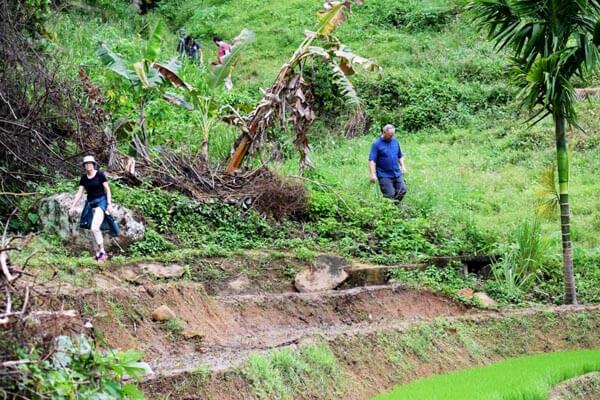
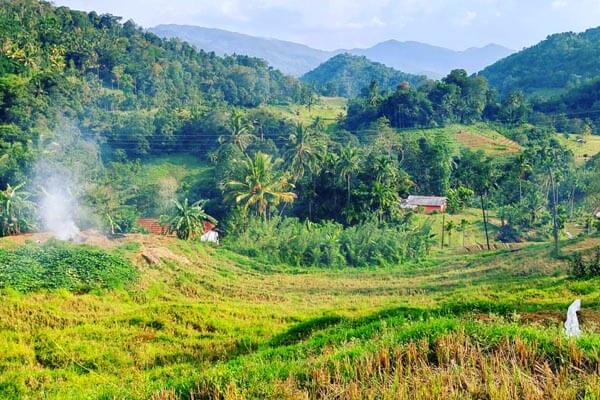
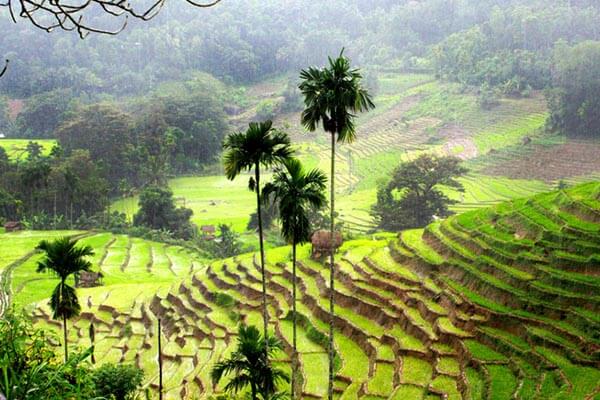
For many city- dwellers, a visit to the Heeloya village would provide a refreshing change of scenery. Located far away from the hustle and bustle of any major city, Heeloya is remote agricultural village bordering the knuckles forest reserve within the kandy district. Dotted with paddy- field and threshing grounds (kamatha), the village’s picturesque landscape is reminiscent of Sri Lanka’s agricultural precedence in the past. Two of these prominent threshing grounds are built from stone blocks. Instead of the usual clay. This was an ingenious invention introduced by the village’s first settlers, to prevent harvested paddy from getting damaged by intermittent rains experienced in the region.
The village also features a unique attraction of community- based justice systems meted out during the reign of the Kandyan Kingdom. The proceeding of hearing a case by a village leader are still intact in heeloya. Known as the ‘Wariga Sabhawa’, historical records affirm that village communities gathered at Heeloya to receive verdicts of ongoing cases. It is stated that even the Kandyan nobility and monarchy attended these council sessions at Heeloya.
The main livelihoods of the village community are paddy, vegetable and spice cultivation, home gardening and livestock rearing. Villagers also engage in toddy tapping, handicrafts, bee-keeping and teaching traditional dance as supplementary sources of income. Visitors to the village are able to find charming homestays with hospitable villagers, while partaking in daily village activities such as planting paddy, picking vegetables, preparing traditional meals and engaging in traditional games dances.
Perumal Ella

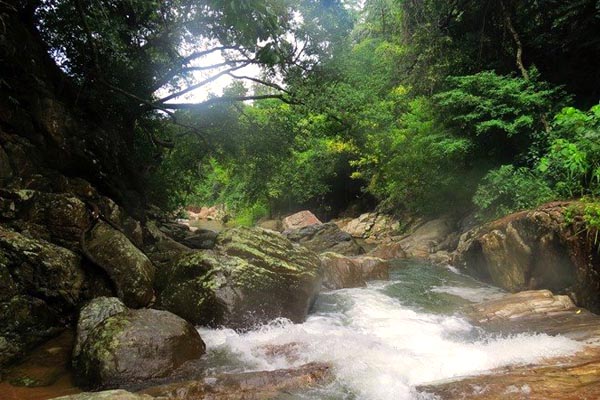

The little-known perumal ella (waterfall Lies on the Galmal oya a few kilometers above the Victoria reservoir, bordering the Knuckles forest reserve in the Hakmana area. The waterfall is visible from the nearby Heeloya village, and can also be accessed by travelling 1 kilometer northwards from the Heeloya bus stop, along the Veheragodatenna road. Albeit no official record of its height, villagers claim that the waterfall cascades from a height of 100 feet. The Perumal Ella is an hidden gem of nature. Not many tourists are aware of its existence, unless the villagers from Heeloya guide them towards its location.
CEYLON TEA MUSEUM
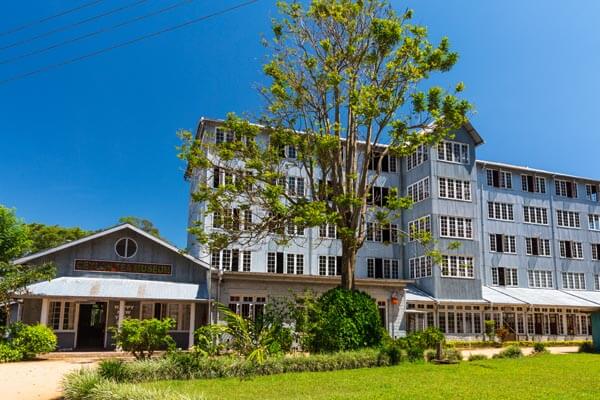
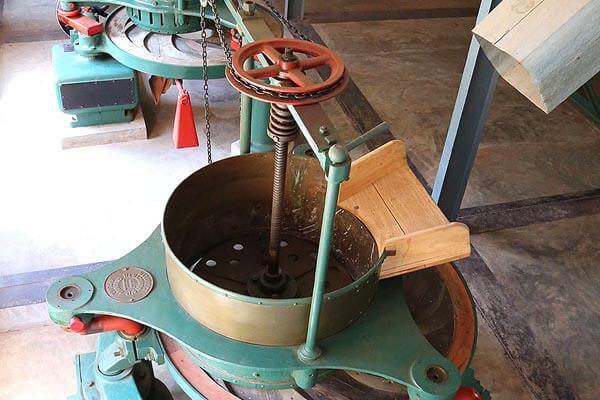
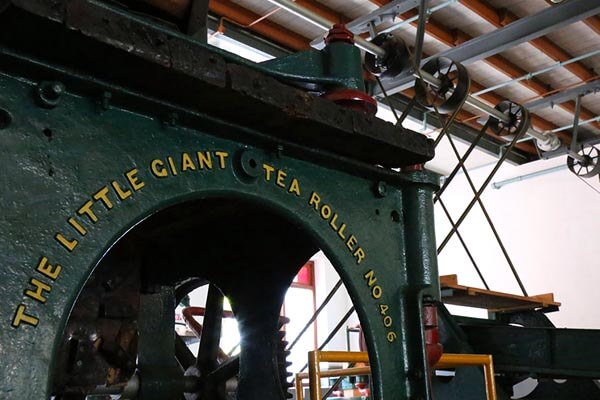
At the end of an 8 kilometre drive up the winding Hantane road from Kandy lies the Ceylon Tea Museum, created under the auspices of the Tea Board and the Planters Association of Ceylon. Converted from a four-storey tea factory built in 1925, the museum is easily accessible from the city of Kandy and provides adequate parking facilities for cars and tourist coaches. Visitors are greeted warmly at the entrance and are given a full-guided tour of the museum.
Taylor, the founding father of Sri Lanka’s tea industry. The first floor also shelters a library and an auditorium with facilities for audiovisual presentations. The third floor is allocated to tea sales outlets that display a wide selections of Sri Lanka’s finest teas. The fourth and topmost floor accommodates a classic tea cafe. A panoramic view of the Kandy town surrounded by the beautiful Hunasgiriya Mountains and the Knuckles Mountain can be viewed through a telescope mounted on the café floor. The grounds surrounding the museum are also landscaped with different varieties of tea.
Albeit closed on Mondays and public holidays, the museum remains open from Tuesday to Saturdays from 8.30 AM until 3.45 PM, and on Sundays from 8.30 AM until 3.45 PM, and on Sundays from 8.30 AM to 3.00 PM. Local and foreign tourists as well as students are known to frequent this location. The Ceylon Tea Museum is a must-visit attraction in Hantane, as it provides a refreshingly educational experience that enhances the allure of the hill country and its prominent tea industry.
Kandy District is a district of the Central Province of Sri Lanka. Its area is 1906.3 km². The capital of the district is Kandy. Contents. Kandy Regional Office is located in the Kandy district within the Central Province of Sri Lanka.
